There are many possible causes for white tongue, and in some cases, it comes with an unpleasant odor and mouth dryness. To get rid of it, sometimes you just need to brush your teeth. But what should you do if that doesn’t help?

What white tongue is
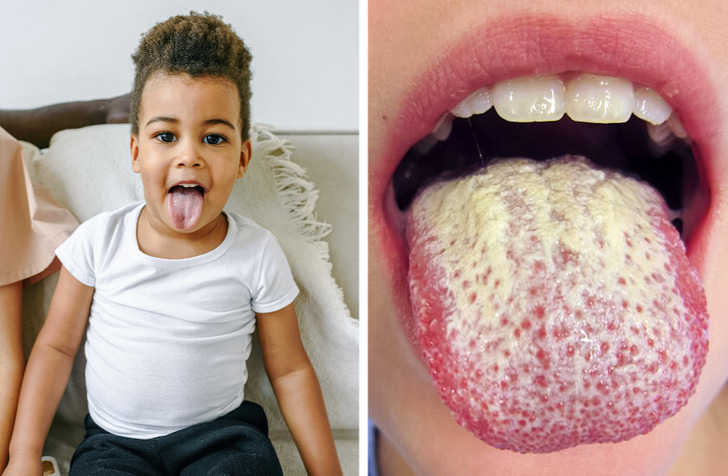
The white film may cover the entire tongue, part of it, or appear as spots. At the same time, an unpleasant odor and taste in the mouth may appear. It looks as if there are small white hairs on the tongue’s surface. In fact, they are buds covered with organic particles, bacteria, and dead cells.
White plaque on the tongue (which can also be yellow) may appear for different reasons, like due to irritation or because of an infection. It usually disappears after several days. If the situation doesn’t change for several weeks, and it’s painful to eat and talk, it’s best to see a doctor.
It’s important to note that the plaque may not only be white. While a pink tongue is normal, a brown tongue means the person drinks too much coffee or tea. A yellow tongue means there’s something wrong with the liver, and a red tongue is a sign that the person lacks vitamin B.
Why the tongue becomes white
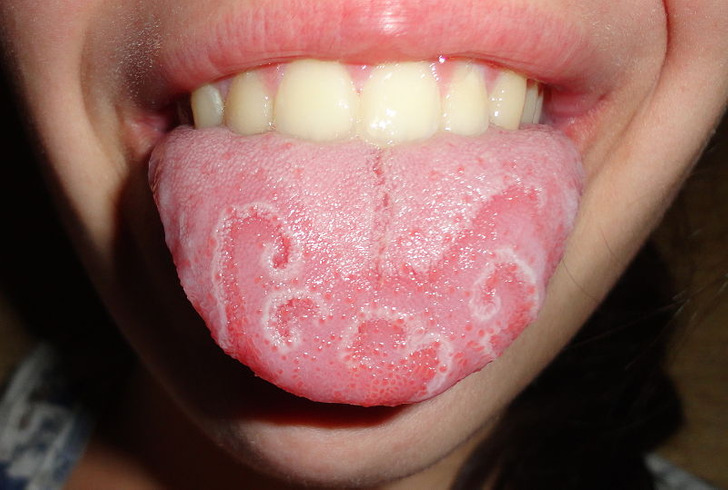
Usually, the tongue becomes white due to bacteria, leftover bits of food, or dead cells that get stuck in between the buds. Because of this, the buds may increase in size or become inflamed. This is how white spots on the tongue’s surface appear.
Sometimes, the plaque appears due to an illness. For example, the geographic tongue is also a condition where white spots appear on the tongue. It’s quite rare, and the causes are unknown, but the condition itself is often connected to eating foods that irritate the tongue. It may also be a reaction to stress, an illness, or hormonal changes.
Why white plaque appears on the tongue
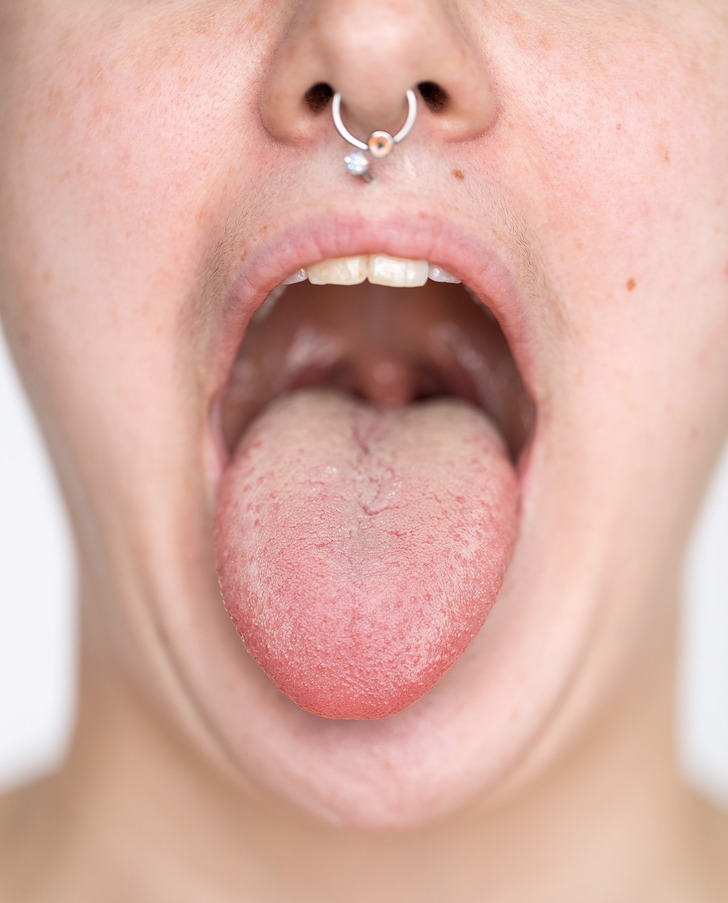
There are some things that make the appearance of white plaque on the tongue more probable:
- Age
- Taking antibiotics (white-yellow plaque appearing when there’s a fungal infection in the mouth)
- A diet that’s lacking enough fruits, vegetables, vitamin B12, and iron
- A weak immune system
- Bad mouth hygiene
- Dental prosthetics or other objects that can damage the tongue
- Dehydration and mouth dryness
What piercings have to do with white tongue
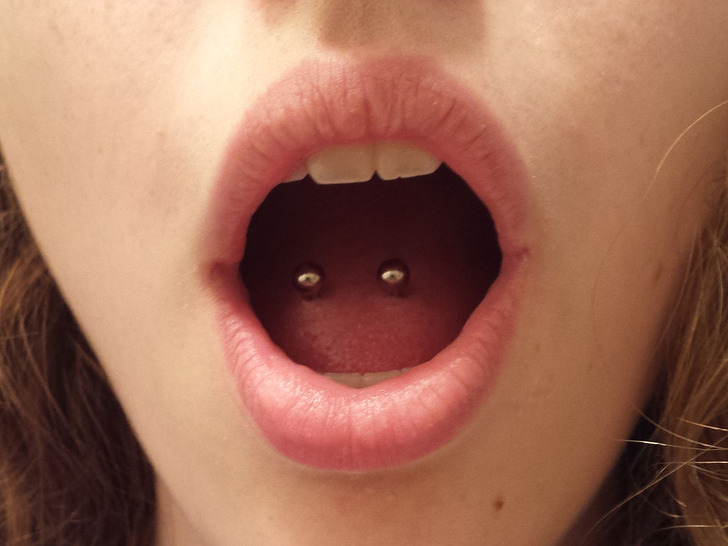
Right after piercing the tongue, there might be some white film present. This happens because the number of bacteria on the tongue increases, and it’s normal. Antibacterial mouthwash will help you get rid of it. Plus, there might be a ring around the piercings, which is normal too, and it means the tissue is healing.
If the plaque appears due to an injury (including piercings), the healing should take around 1.5 weeks. You should avoid irritants, such as hot, spicy, or sour foods and drinks.
How to get rid of white tongue at home
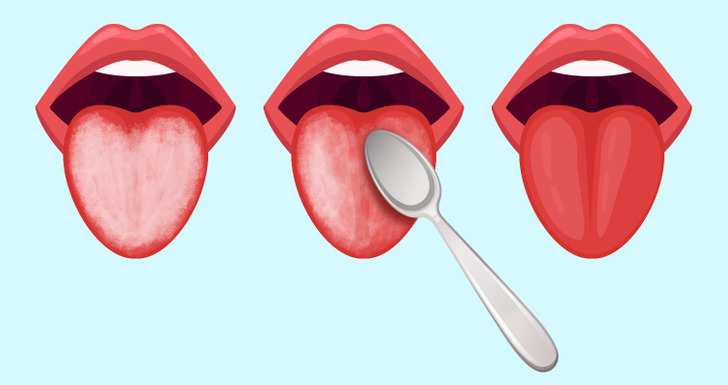
- Practice good mouth hygiene.
- Drink enough water.
- Brush your teeth using a soft toothbrush.
- Use a mild fluoride toothpaste — one that doesn’t contain sodium lauryl sulfate.
- Use fluoride mouthwash.
- Brush your tongue or use a tongue scraper to remove the white coating.
- Drink cold drinks through a straw.
- Avoid food and drinks that are spicy, salty, acidic, or very hot in temperature.
Who to talk to if you’re worried about your white tongue
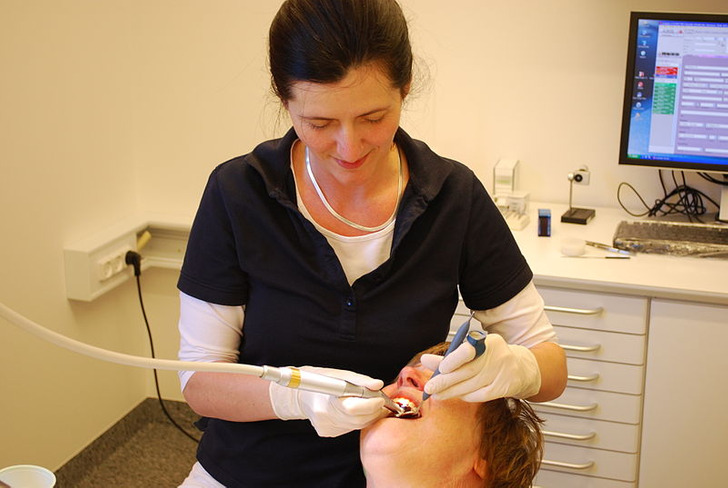
- Your dentist can help you remove the white film from the tongue and prescribe medications if needed.
- Your GP can diagnose the tongue, prescribe you certain medications and determine if the white tongue is an indicator of a more serious issue.
What do you do about white tongue?
Preview photo credit Genusfotografen (genusfotografen.se) & Wikimedia Sverige (wikimedia.se) / Wikimedia Commons, CC BY-SA 4.0, Martanopue / Wikimedia Commons, CC BY-SA 3.0
A Heartwarming Tale: From Abandoned Puppy to Beloved Companion – A Story of Hope and Love.
Amidst a beautiful spring scenery, a heart-wrenching tale of a puppy in distress plays out. The poor little pup is separated from his mother and embarks on a challenging emotional journey that explores the universal theme of separation anxiety. The story captures the deep connection that exists between a mother and her offspring, and tugs at the heartstrings.

Puppies rely on their mother not only for food but also for emotional support. Being taken away from their mother can cause distress and feelings of fear, sadness, and vulnerability.

This touching story tells of a puppy who cries out for help, moving those who hear it to feel empathy and kindness. The happy ending highlights the value of reestablishing emotional connections and providing comfort and support. It’s a powerful reminder of how important emotional bonds can be and their lasting impact on a person’s happiness and health.

The conclusion of this tale portrays the significance of companionship and the strong emotional connections between animals and humans. The puppy found comfort and encouragement from his mother, highlighting the transformative capabilities of such bonds. This emphasizes the importance of being attentive to the needs of all living beings and offering solace during difficult times, promoting empathy and kindness as essential values.

In the end, the tale of the puppy’s cries for aid after being separated from its mother is a heartwarming example of how compassion can be life-changing and how kindness can bridge the emotional divide between humans and animals. It is a reminder that we must pay attention to the needs of all living beings and provide comfort and assistance during times of distress, encouraging empathy and compassion.



Leave a Reply